We Need Better Transit!
Suburban officials and business leaders at Downtown conference on transit call for better connections to the city.
“Brave words, but will they have much impact?” That’s how Bruce Murphy concluded an Urban Milwaukee story last December about a Public Policy Forum study of Milwaukee’s transit shortcomings.
On Wednesday, February 5th, members of the business community were briefed on the study at a University Club breakfast organized by the Greater Milwaukee Committee. If you’re looking for impact, that is not a bad place or group for finding it.
Forum President Rob Henken outlined the bullet points of the study, entitled, “Getting to Work: Opportunities and obstacles to improving transit service to suburban Milwaukee job hubs.”
- We face a “spatial mismatch” between where jobs are and where workers live.
- Thirteen per cent of workers in the City of Milwaukee do not have cars.
- Today’s job centers are not served by transit.
- Budget cuts have forced a 22 percent decline in annual bus miles.
So now what? The long term solution is easy. “An ideal solution would be to encourage job growth in areas that already are well-served by transit,” such as urban Milwaukee, the study notes. We’ve been saying that for years.
Attendees were briefed on the report’s recommendations, including the establishment of a few strategic express bus lines to connect workers to jobs. Then a panel discussion brought some real world perspective to our transportation plight.
Brian Dranzik of the Milwaukee County Transit System gave some perspective on the operational side of the ledger. He must deal with calculations of route productivity (22 passengers per bus hour is the standard). His revenue sources come from many places, with the farebox being just one component. If the county would like to expand bus service across its lines to, say, Waukesha County, he has no choice but to force Waukesha to pay for the expansion.
This hardly puts the transit system in a good negotiating posture if the purpose of the expansion is to primarily benefit Milwaukee County residents who need to get to a job. Dranzik used to be able to rely on Job Access Reverse Commuter funding from the federal government for this, but that program was repealed last year.
The 143 bus route that operates in Ozaukee County primarily serves the MATC North campus; it flies up the freeway for several miles in Mequon, bypassing thousands of jobs on N. Port Washington Road. The route is determined by Ozaukee County; MCTS just contracts to operate it.
Oh, and while we’re at it, the new farebox-paperless transfer system now being installed in all MCTS buses will not be compatible with the system used by the Waukesha County Transit System buses. Is this any way to run a transit system?
You’d think after a quarter century or more of talking about it, we might get around to creating a regional transportation authority of some sort, Henken suggested.
Panelist Steve Scaffidi, mayor of Oak Creek, was quick to respond, saying, “You put ‘Authority’ on the back of anything around here, you will have opposition.” The population of his city has gone from 20,000 to 35,000 since 1990 and is considered 99 percent urban, but you’d never know it from its transit status.
“There is resistance in suburbs to expanding bus service,” Scaffidi said. “There are reasons I don’t need to tell you and I don’t believe in.” Scaffidi said his town is growing with such development as the Drexel Town Square, some 600 apartments by Rick Barrett and Matt Rinka, a medical facility, retail, and a Four Points by Sheraton Hotel. “I don’t have 1,000 parking spaces for workers just to sit there all day,” he said, adding that the elderly need transit.
“It’s silly to build a new downtown if your residents can’t get there.”
David Karst of MRA, an employers group, said his perspective is that “people in the city of Milwaukee want to work. Take down the obstacles.” He formerly worked for Buy Seasons, when that company hoped to build a distribution center in the Menomonee Valley, close to worker and transit. The plan was derailed by the opposition of Ald. Bob Donovan, and the above-minimum wage jobs went to New Berlin, where the company hires private buses to transport some 400 workers to their jobs.
Another perspective came from Lou Ann Koval, the General Counsel and VP of Human Resources at HB Performance Systems in Mequon. The firm, formerly Hayes Brake, is located in an industrial park at 5800 W. Donges Bay Rd. It is one of scores of industrial buildings clustered there in a converted cornfield, inaccessible to public transportation, despite being an employment hub for perhaps 1,000 workers. It is the poster child for “job centers without access to transit,” one of the study’s bullet points.
Koval said she has turned down carless job applicants for “humanitarian reasons” since their commute, capped by a two-mile walk to the nearest bus stop, would take better than half of a workday. She says she tries to find these people jobs in the city, or near transit. Hayes Brake, and many other suburban manufacturers, relied for years on local talent for the workforce.
“We used to hire the farmers’ kids,” she said. “Now we hire from the unemployed people of the city of Milwaukee.” The farmers’ kids have disappeared, and the farmers themselves have retired to Florida on the proceeds of the farms they sold to developers who built the mansions that surround the inaccessible industrial parks. And thus the cycle continues. How will she get workers for the jobs in her plant? “We may have to partner and do shift-sharing” with neighboring plants, she suggested. This is another suggestion of the study: that it may be possible to effectively serve target areas — provided the work shifts start and end at the same time. These are simple things that could make an otherwise disconnected location a viable transit spot.
It apparently is up to the GMC members to figure this out one bus stop at a time.
Mayor Scaffidi said that he has never lived in the city, but said he “loves the city of Milwaukee, and transit is part of it.” He said he hasn’t taken a bus here for “25 years,” but observes transit systems in his travels and sees a big difference — one that is holding back development here: “Here, we have never made a commitment that people can get to work without their cars.”
In response to a question asking “Who should be the voice” of the call for effective transit, Scaffidi suggested the 19 mayors and village presidents of Milwaukee County municipalities might be a good choice. However, that still keeps Waukesha, Ozaukee and Washington Counties out of the loop, and not a word was said about Racine County.
“We lack rapid transit,” said Henken. And then, as he noted quickly thereafter — “Rapid transit does not have to be rail,” — a tacit admission that this hot-button issue (for AM Talk Radio hosts) still controls the public agenda on transit.
As Mayor Scaffidi concluded, “There needs to be some bravery on the part of elected officials that we don’t have now.”
With that, the attendees headed to their automobiles to spread the gospel of transit, with Manpower CEO Jeff Joerres offering this parting thought: “Think of the people you see out at the bus stop as you drive by.”
At the Event
Among the attendees were Greg Marcus, CEO of the Marcus Corporation, operator of hotels and theaters, some with excellent transit, others abysmal. John Daniels, the head of the GMC offered introductory remarks. He has been squiring Rob Henken to so many events lately they have become a veritable team, he joked. David Crowley was there with his boss, Sen. Nikiya Harris. Kerry Thomas, Transit Now Executive Director, stopped by to follow the proceedings. Arthur Smith attended as did “Downtown” Dan McCarthy, Frank Gimbel and George Gerharz. Dr. Hermann Viets, president of MSOE, said he figured part of the problem with transit is that the funding comes from too high up in the government, rather than locally, where we could have some control. Jeff Joerres, whose company deals with worker transit issues on a global basis, exuded optimism, promising more results from the meeting are to come.
Photos from the Event
Political Contributions Tracker
Displaying political contributions between people mentioned in this story. Learn more.
Plenty of Horne
-
Villa Terrace Will Host 100 Events For 100th Anniversary, Charts Vision For Future
 Apr 6th, 2024 by Michael Horne
Apr 6th, 2024 by Michael Horne
-
Notables Attend City Birthday Party
 Jan 27th, 2024 by Michael Horne
Jan 27th, 2024 by Michael Horne
-
Will There Be a City Attorney Race?
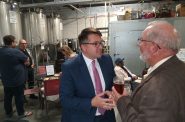 Nov 21st, 2023 by Michael Horne
Nov 21st, 2023 by Michael Horne


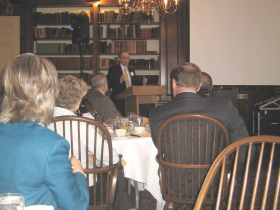
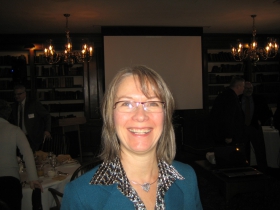
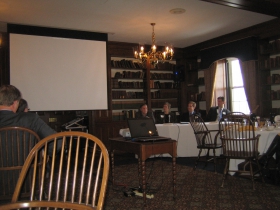
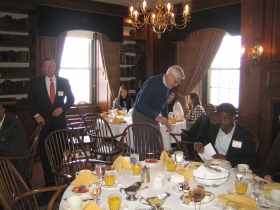
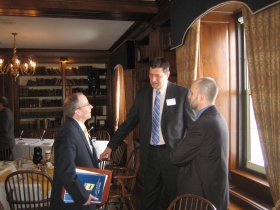





















Phenomenal article! I really hope some action comes out of this!
The only way action will come is when the GMC powers that be call off their Republican legislative dogs. The legislators are slavishly obedient to business interests when asked, but the business community has washed its hands of this issue, letting the legislators play to their talk radio fan constituency.
Any successful human society throughout history has had a successful transportation network for the movement of people, goods, and services. The skelton like roads leading into and out of Milwaukee were built on the framework of older Native American paths that had been in existence for thousands of years.
Our region and the rest of the planet will face increasing cost and availability of energy that fuels transportation systems. Many families are already priced out of car ownership potential and the only alternative is walk or public transportation. The article covers in detail the lack of vision and planning transportation systems for decades that has occurred and the difficulty in getting to a job.
Growing up in Milwaukee in the 50s and 60s, many people even walked to work. In my case over a 35 year career in downtown Milwaukee, I bused for over 25 years, an never lived more than 6 miles away, and most times it was a 20-minute trip. In many cases today the quality of a job and salary in outlying areas does not begin to support owning a car to get there and even challenges the cost of a public transit and hours it may take in a day for travel. It is a real mismatch with no simple answers.
I enjoyed the article and agree that we need better transportation not just for business but for quality of life as well. I also want to point out an inaccuracy. THe article point out, “The 143 bus route that operates in Ozaukee County primarily serves the MATC North campus; it flies up the freeway for several miles in Mequon, bypassing thousands of jobs on N. Port Washington Road.” , however The 143 does not stop at MATC north campus. http://www.ridemcts.com/routes-schedules/routes/143#Weekday . The bus line that serves MATC north is the 42U. http://www.ridemcts.com/routes-schedules/routes/42U#Weekday The 42U is only on the freeway for a very short distance, from Brown Deer road to the next exit on Port Washington Rd just south of the county line. From there the bus stays on Port Washington Rd past ALL of the businesses from the county line to Highland Road in Mequon. If this bus line had a few more stops it would better serve this suburb and employees alike.
Rachel is correct – the 143 is the Ozaukee County Express, which runs from Port Washington to Downtown Milwaukee. However, it is truly a suburban commuter route as it only runs southbound in the morning and northbound in the afternoons. So for reverse commuters it’s useless.
I live in Cedarburg and have ridden this route several times when I’m downtown for the day; I wish it stopped in downtown Cedarburg and not at the I-43 offramp. To think we threw away the great rail connections that existed between the North Shore and downtown: http://www.tmer.org/index.html
Having recently visited Seattle, we can attest to the antiquated state of Milwaukee’s mass transit service. Seattle provides light rail and bus service that make it a pleasure to navigate the city as a visitor and no doubt, as a resident.
I have witnessed first hand the effects of poor transportation to the suburbs. It hurts businesses and it hurts potential employees. Unfortunately, politics has been an insurmountable obstacle to getting anything done. It’s clear why businesses set up shop outside of Milwaukee County… The taxes are astoundingly cheaper, the communities are more pro-business (no required sick day ordinances, far less fees and taxes, less barriers to entry, no talk of minimum or living wage hikes, etc), and as of right now many of them can survive without bussing in workers.
Hayes Brake, as it was once called, was indeed built on a former corn field in the 60’s… but that’s rather misleading since what area of Milwaukee wasn’t once a farmer’s field, a swamp, or forest land? The point is they are still surviving without a bus route. If they get to the point that they cannot, they’ll either actually do something about getting a route (work w/ other area businesses to align shifts, start a real campaign to get a route, etc) or they’ll move to where there is one. Right now, tax payers in the ‘burbs don’t see the value of helping Milwaukee with it’s unemployment when Milwaukee itself is doing so much to hurt it’s own unemployment.
Let me repeat the last part since it’s the most important… The suburbs do not want to subsidize fixing unemployment in Milwaukee County when Milwaukee County and the City do so much to ruin employment opportunities themselves.
There is plenty of blame to go around and politics is destroying the opportunity to make our region outstanding. Worse of all, people who actually want to work are getting caught in the middle. If you want regional cooperation on transportation, you need to have regional cooperation in many other areas. Until then I doubt much will change.
I was going to write a long winded, somewhat well thought out comment, but Andy said it very eloquently……
This region needs to get past this “screw the suburbs”/”screw Milwaukee” attitude. That goes for not only the leaders of these communities, but more importantly the citizens of these communities. The reason there are things to do in SE WI is BECAUSE of Milwaukee. To make Milwaukee thrive, the city needs the rest of SE Wisconsin to visit, spend money, and support the city/area instead of denegrating it.